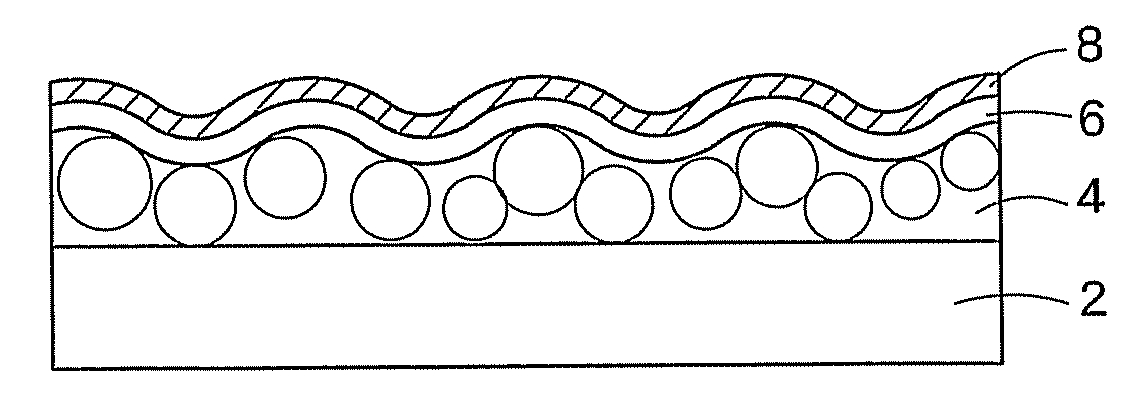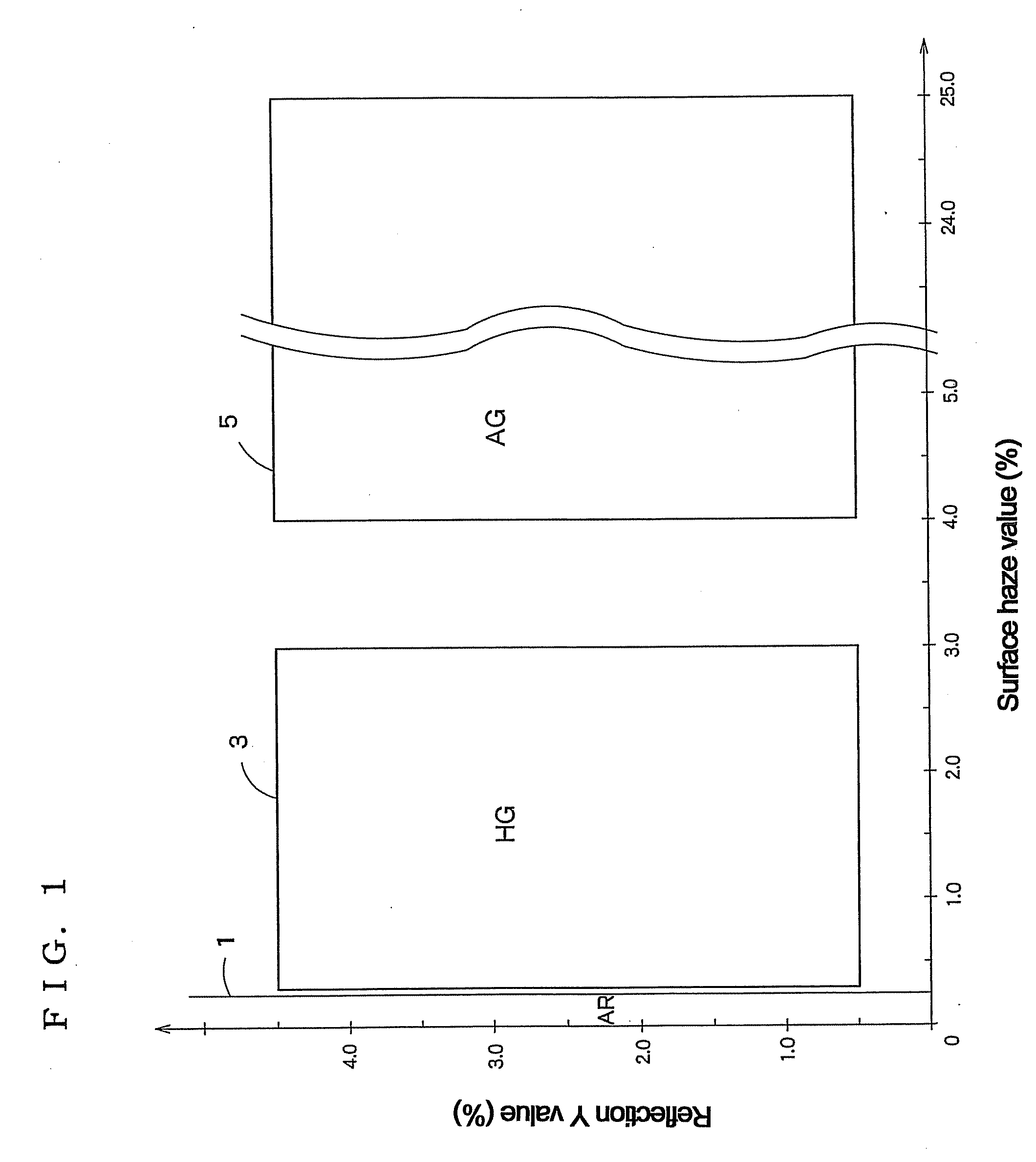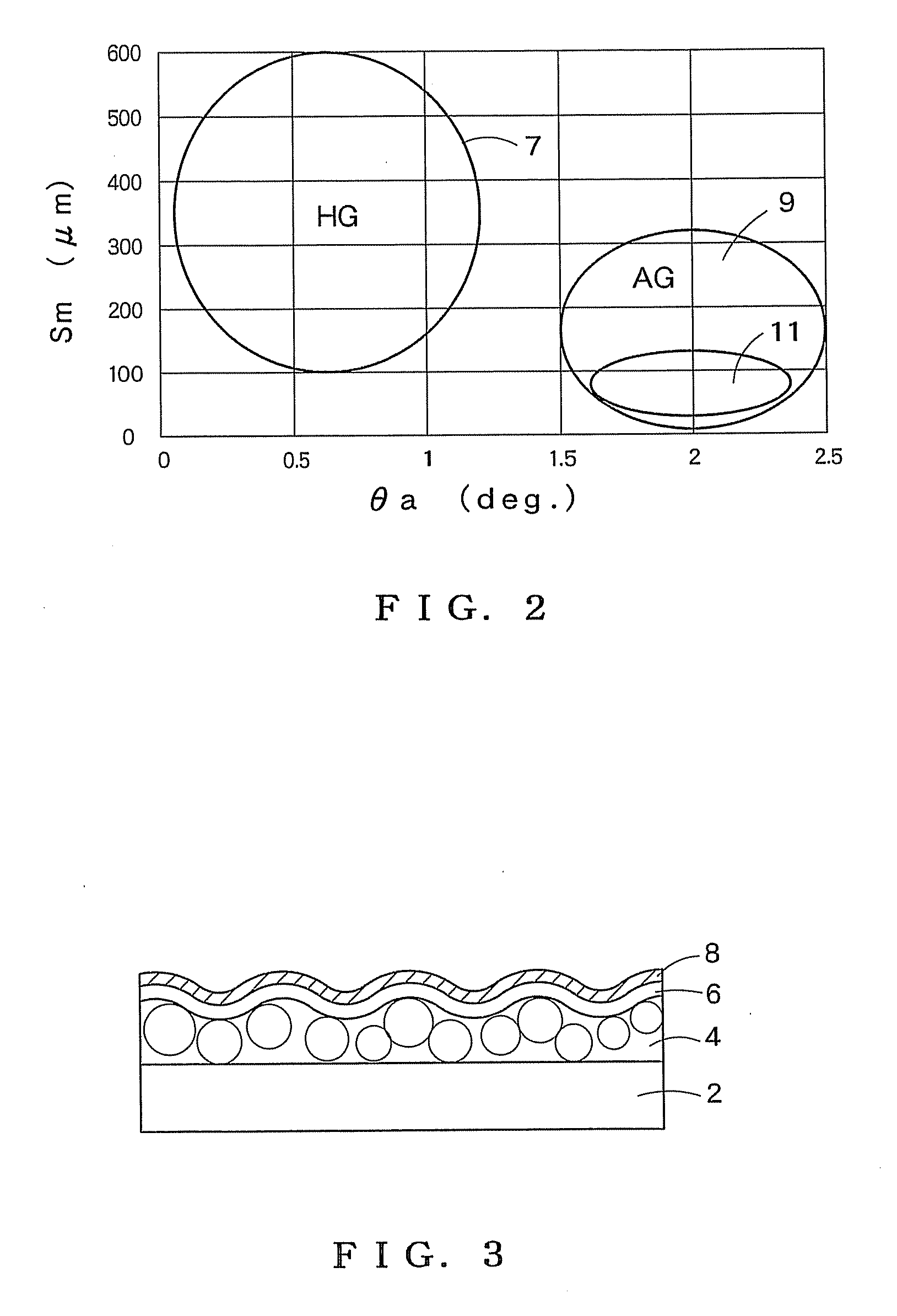Optical Multilayer Body
a multi-layer body and optical technology, applied in the field of optical laminates, can solve the problems of difficult to achieve the effect of anti-dazzling laminate per se, narrow and large curve of concave shape, and difficulty in achieving the effect of anti-dazzling laminates, etc., to achieve excellent anti-glare properties, excellent anti-glare properties, contrast, and letter blurring
- Summary
- Abstract
- Description
- Claims
- Application Information
AI Technical Summary
Benefits of technology
Problems solved by technology
Method used
Image
Examples
example 1
Formation of Anti-Dazzling Layer
[0285]An 80 μm-thick triacetylcellulose film (TD80U, manufactured by Fuji Photo Film Co., Ltd.) was provided. Composition 1 for an anti-dazzling layer was coated onto the film with a wire-wound rod for coating (Mayer's bar), and the coated film was heat dried in an oven of 70° C. for one min to evaporate the solvent component. Thereafter, under nitrogen purge (oxygen concentration: not more than 200 ppm), ultraviolet light was applied at an exposure of 30 mJ for half curing to cure the coating film. Thus, a 5 μm-thick anti-dazzling hardcoat layer was formed. The light transparent fine particles were monodisperse acrylic beads having a particle diameter of 5.0 μm.
[0286]Formation of Surface Modifying Layer
[0287]Composition 1 for a surface modifying layer was coated onto the anti-dazzling layer with a wire-wound rod for coating (Mayer's bar), and the coating was heat dried in an oven of 70° C. for one min to evaporate the solvent component. Thereafter, u...
example 2
[0288]An optical laminate (HG2) was produced in the same manner as in Example 1, except that composition 2 for an anti-dazzling layer was used. The light transparent fine particles in composition 2 for an anti-dazzling layer were monodisperse acrylic beads having a particle diameter of 9.5 μm, and the surface modifying layer had a thickness of 4.0 μm.
example 3
[0289]An optical laminate (HG3) was produced in the same manner as in Example 1, except that composition 3 for an anti-dazzling layer was used. The light transparent fine particles in a coating composition for anti-dazzling layer formation were monodisperse acrylic beads having a particle diameter of 13.5 μm.
PUM
| Property | Measurement | Unit |
|---|---|---|
| Angle | aaaaa | aaaaa |
| Angle | aaaaa | aaaaa |
| Length | aaaaa | aaaaa |
Abstract
Description
Claims
Application Information
 Login to View More
Login to View More - R&D
- Intellectual Property
- Life Sciences
- Materials
- Tech Scout
- Unparalleled Data Quality
- Higher Quality Content
- 60% Fewer Hallucinations
Browse by: Latest US Patents, China's latest patents, Technical Efficacy Thesaurus, Application Domain, Technology Topic, Popular Technical Reports.
© 2025 PatSnap. All rights reserved.Legal|Privacy policy|Modern Slavery Act Transparency Statement|Sitemap|About US| Contact US: help@patsnap.com



